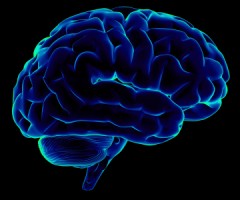An Anxiety disorders can fill people’s lives with overwhelming anxiety and fear. Unlike the relatively mild, brief anxiety caused by a stressful event anxiety disorders are chronic, unyielding, and can grow progressively worse if not treated.
Generalized anxiety disorder (GAD) is a disorder that manifests as persistent worries, fears and negative thoughts, which last a minimum of six months. Unlike people with phobias or post-traumatic disorders, people with GAD do not have their worries provoked by specific triggers; they may worry about almost anything having to do with ordinary life. People with generalized anxiety disorder (GAD) go through the day filled with exaggerated worry and tension. They anticipate disaster and are overly concerned about health issues, money, family problems, or difficulties at work. Sometimes just the thought of getting through the day produces anxiety. People who suffer from GAD have a difficult time controlling the anxiety, which is associated with the following: restlessness, feeling “keyed up” or on edge; being easily fatigued; difficulty concentrating or having the mind go blank; irritability; muscle tension; difficulty falling asleep or staying asleep, or restless sleep. The anxiety causes significant distress and problems functioning. It is not unusual for patients diagnosed with GAD to shift the focus of their anxiety from one issue to another as their daily circumstances change.
Panic disorder is an anxiety disorder and is characterized by unexpected and repeated episodes of intense fear accompanied by physical symptoms that may include chest pain, heart palpitations, shortness of breath, dizziness, or abdominal distress. A panic attack, the core feature of panic disorder, is a period of intense fear or discomfort that strikes suddenly, often in familiar places, where there is seemingly nothing threatening an individual. But when the attack comes, it feels as if there is a real threat, and the body reacts accordingly. The discomfort and sense of danger the attack brings is so intense that people with panic disorder often believe they are having a heart attack or other life-threatening illness.
Separation Anxiety is normal at certain developmental stages. For example, when a child between the ages of eight and 14 months is separated from her mother or other primary caretaker, she may experience distress. Separation anxiety that occurs at later ages is considered a disorder because it is outside of normal developmental expectations, and because of the intensity of the child’s emotional response. Separation anxiety disorder occurs most frequently from the ages of five to seven and from 11 to 14. Children experiencing separation anxiety disorder display significant distress upon separation from the parent or other primary caregiver. It often becomes problematic for families during elementary school, although it can also occur in older or younger children. The child appears fearful because he or she thinks something horrible will happen to the child or parent while they are apart. The child’s responses to separation may include crying or becoming angry with the adult in an attempt to manipulate the situation.
Phobias are persistent and recurrent fears of a particular situation, object or activity. The person experiencing them knows that the fear is irrational, but they cannot help it. There are several types of Phobias:
- Agoraphobia: The most severe of the phobias, it includes a fear of open spaces, public places, and crowds. The person fears and avoids places for which there is no quick escape. It is also common for agoraphobics to fear being alone, so they usually stay at home with a friend or relative present. If they do leave the house, they are usually accompanied by a friend or family member. This phobia is most often associated with women, and usually arises during late teens or early twenties. Agoraphobia often begins with a panic attack while the person is away from the house, and the person then stays at home to avoid experiencing that situation again.
- Simple Phobias: A fear of one particular object or event, such as a fear of flying, snakes, insects, heights, etc. These are typically not difficult to treat, and can be remedied on an outpatient basis.
- Social Anxiety Disorder (Social Phobia) is when a person has an excessive and unreasonable fear of interacting with other people in social situations. A person with social phobia constantly fears they will embarrass themselves or make mistakes in front of other people, developing a negative self-consciousness. When placed in a social situation, they become anxious or may have a panic attack. As the illness progresses, persons with social anxiety disorder may have distorted thinking, and may begin to avoid contact with other people. This may interfere with work, school and personal relationships.






